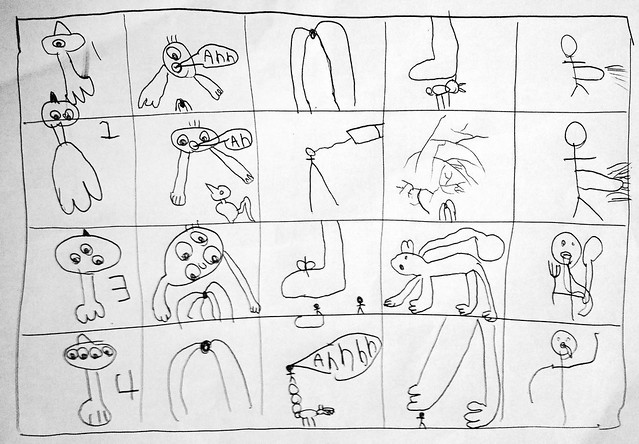Topo maps, musical fractals, easy and complex tasks: Newsletter April 18 2014
Subscribe to Moebius Noodles newsletters
Pinterest | Twitter | Facebook | Google+
I am Moby Snoodles, and this is my newsletter. Send me your questions, comments, and stories of math adventures at moby@moebiusnoodles.com

Seeking all video makers!
We are starting to build Mathematician badge for the wonderful DIY.org site. We need short videos showing how to make things rich in math, mostly models. If you want to collaborate, drop me a line!
Math Spark: Topo maps and derivatives

Can you match mountains to their topographic maps? This mini-game has to do with the idea of slope, which is one of the less steep paths to the idea of derivative.
What happens to the slope when the level lines on the map get closer together? Are higher mountains always steeper? For these and other questions, read the story from our local Math Circle.
Have a math spark from your family or group? Email us so we can share your adventures on the blog!
News from the open Multiplication course
Our online course is in its second week. Participants share deep observations, thoughtful questions, triumphs in parenting, and lots of visual media. Here is a glimpse: James composed “Fractal Jacques” for his baby girl. He writes:
My daughter was in a fussy mood this morning, so we went with a music fractal, as music often makes her happier. We chose one of the songs from her music class, Frère Jacques. It’s 16 measures long, so we pulled out the middle 8, sped up the tune to double time, and inserted that in instead. The double time tune also has a middle (4 bars now), so we put in the original sped up 4 times. Finally, we put in two bars of 8x in the middle of that. We did try even faster, but it was too hard for me to spit out words that fast. Since Frère Jacques is a round, all the iterations can be played at the same time without getting too much clashing of harmonies. Here’s the sheet music for “Fractal Jacques”, followed by a video me singing the fourth iteration to my daughter along with a midi rendering.

Blogs and networks
Our Marina Mersenne interviewed Chiu-Ki Chan, the creator of Heart Collage, for our blog. Building objects out of smaller objects is one of the main ideas of calculus – in this case, embodied in photo collages.

At Bloke School blog, Dave Pommier totally gets the essence of the Moebius Noodles book:
I have seen quite a lot of people discussing moebius noodles, and have just recently managed to acquire a copy of their book. It is full of ideas which can be as simple or difficult as you are prepared to make them, which is what I enjoy about it most. It is a book of easy complexity.

Dave says that kids’ covariance grid got too whimsical when he left for work around Column 3, but I notice what I call local structured variation between some cells. It’s a precursor to grid reasoning!
In an instance of synchronicity, our Matt Droujkov uses a semiotic square to show how math activities can be easy and complex at once, like many of our Natural Math designs, or simple and hard at once, like a worksheet with a hundred of mundane exercises.

I will keynote the Learning Revolution online conference next week. My presentation is called From adventurous learning to disruptive innovations: brave design in mathematics education. I hope you can join! Here is the conference info.

Sharing
You are welcome to share the contents of this newsletter online or in print.
Talk to you soon! Moby Snoodles, aka Dr. Maria Droujkova
Related Posts
Posted in Newsletter







Leave a Reply